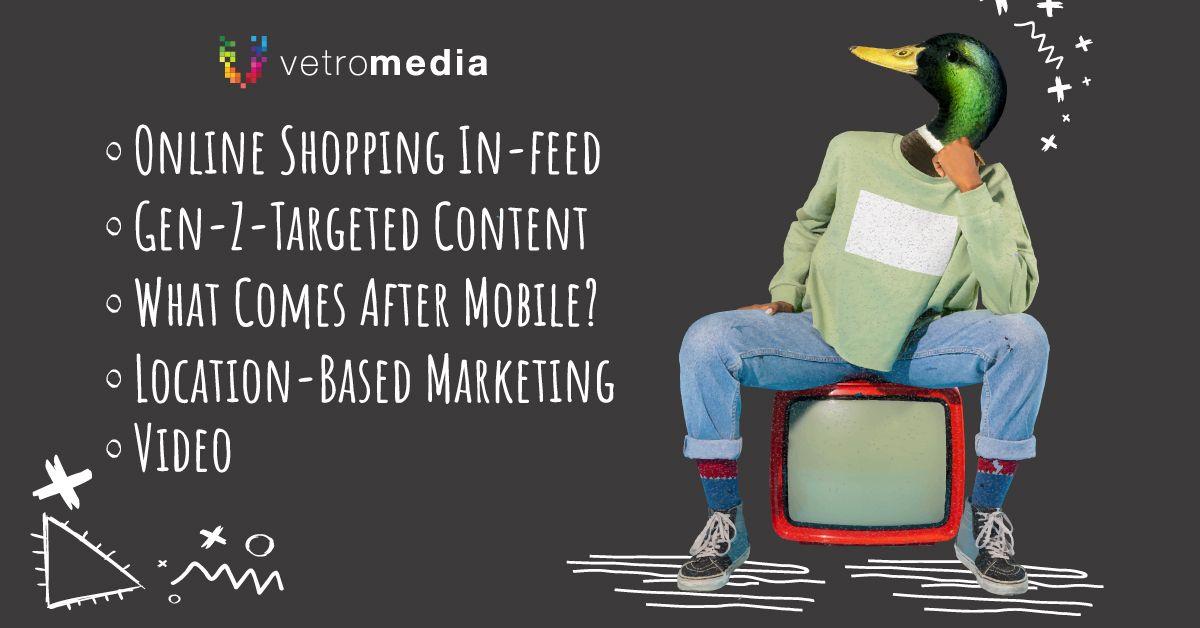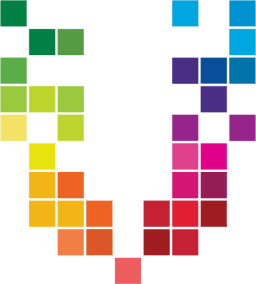Not Five Marketing Trends That You Should Be Watching

Written By Ludwig Spies

No, really – we’re not a trend-trapped agency, but we do know what you google and how to ensure a chance encounter on the web. Now, for our next trick, we will be revealing, or at least pointing towards, some observed truths and intriguing phenomena. We want to tell you about some things we’ve been thinking about; things we’ve noticed, things we know.
**Online Shopping In-feed **
The value of in-feed shopping is obvious. People love the convenience of shopping directly from Facebook and Instagram, and both we and our clients love the technical capabilities afforded by these channels.
The real trick though is adjusting your budget distribution to align with real-world events and fluctuations. This allows for highly specific brand-consumer intersections that spark stellar sales booms over shorter periods. But the benefits aren’t limited to awesome sales spikes. Long term, you should be hunting for a golden goose and a whale: the most profitable basket profile and the most profitable purchase pattern. What do they look like and where might you find these fantastic beasts? Well, that’s an old hunting trick we can’t just give away here.
**Gen-Z-Targeted Content **
While everyone is raging about the need to create Gen Z content we’re kinda calling bullsh*t. Not because we don’t love Gen Z, but because we think that the concept of generational digital marketing is outdated at best and weirdly conformist at worst. Concepts and creative resonate with people because it’s artful, clever and relevant. And you don’t achieve relevance with gratuitous slang.
It’s true that people from different time periods may have different world views, use technology differently and speak differently. But the same is true for people within a generation, whilst the opposite also is true for people across generations. Somewhere along the line the industry seems to have confused placement with creative and connection – possibly because we hoped it would enable us to bulk-create and bulk-deploy using our shiny new algorithms. Categories are useful but stereotypes are less so.
Ironically, at the dawn of the internet age, the major excitement was not due to the capability of communicating with more people but rather the capability of communicating with people specifically. You, an enthusiast of 18th Century Japanese string music in San Francisco could now connect with an actual player of said string music in Tokyo. So, can we please remember how cool the internet actually is and start using it that way again?
**What Comes After Mobile? **
Do you remember in 2007 when Apple introduced the iPhone? Steve Jobs described it as an iPod with touch controls, a phone, and a breakthrough internet communications device. Sounds pretty standard, if not outdated, in 2023 – but at the time this was the leading edge of what a comms device could be. So, what’s next?
Well, we don’t know. But perhaps there’s a clue in Elon Musk’s mission to create ‘an app for everything’. Something similar, or Version 01 of something similar already exists – the human brain. Our digital technologies aren’t so much tools for doing what our brains can’t as they are tools for exteriorising and extending what our brains want to do and how far they can reach. Our current devices are intermediaries used to channel our brains into the world – a copper-silicon organ evolved from conscious design.
What comes next? A more sophisticated device? That wouldn’t be much of a next. Though we may see a number of more sophisticated models, the next big thing is probably not a device – it's bio integration. A universal app that mirrors the structure and function of the brain would probably make for a more natural and easier integration. We’ll transition from mobile to inherent. And the focus of much of the type of work we do will shift from engagement to intention as the first detectable interaction.
A precedent for this has already been described. It is theorised that prehistoric microbes, almost as old as the earth itself and barely more than a squishy blip with a membrane, swallowed smaller squishy blips for food. Some of the smaller blips were digested but some proved more tough and found a new purpose inside the bigger blip. It is thought that symbioses arose, with the smaller blips performing useful internal functions for the bigger blips. Eventually, this ancient amalgamation gave rise to complex cells like ours that do everything from coding our genes to metabolising booze. Not so crazy to think that we will eventually slurp our iPhones into our central nervous systems and Tweet from our frontal cortex.
**Location-Based Marketing: Geofencing **
Geofencing serves hyper localised content to devices in a specific, fixed GPS location. This isn’t a new capability but we think we have to start using it with some much-needed contemporary understanding. Like, we’re not the same people we were before the pandemic and lockdown. Though we all know or suspect that, we probably haven’t figured out exactly how and why.
Most of us predicted a stampede of breakout movement and consumer behaviour related to that movement. If the illicit movement and ‘experience-seeking’ (better known as underground parties) were anything to go by, we expected major happenings once the restrictions were lifted. Yet, many people have continued their home-body era and it seems that many of the old pleasures no longer lure people out. Is this evidence of trauma-induced inertia? A shift in values and priorities? Have our lives offline shrunk in favour of online engagement? What am I seeking in the ‘real world’ and why would I set foot in it if what I need doesn’t yet exist?
It’s likely that all of these and other explanations are true to varying degrees for different people in different places. There was a lot of talk, before and during, about how COVID would change our ways of life forever. We were probably somewhat relieved when it appeared that people were resuming their normal lives. But did they? We believe there’s further investigation to be done on the post-COVID psyche, and further thinking required about what people need, where we have to meet them and what we can offer. This isn’t a singular marketing issue that can be confined to copy choices or a simple geofencing implementation. The question penetrates brand and product offerings, the consumer’s full-spectrum experience and gain – and may require a more fundamental brand or business revamp to maintain connection and relevance.
**Video **
Video, video, video. Video, video, Reels. Video, TikTok, video. Definitely, video. No-one said ‘bad’ video though. Good video performance isn’t guaranteed by some kind of format sorcery, just as all movies are not guaranteed to become box-office hits. An audience falls in love with a film because it moves them in some way. Whether it is the story and sets that transport them, or the jokes that roll them, the audience feels something they like. For the same reasons, video is an effective visual format when employed correctly and produced well.
The ongoing success of video is due more to the creative, intelligent use of the available tools and options. Positive response to excellent content creation fuels the algorithms’ favour for the format. So, you might be able to sneak in alongside the cool kids while no-one's watching – until the algorithm notices that no-one is, in fact, watching and relegates your content. Initial reach may be good – heck, you might even hang in there till the end – but there’s a good chance when the lights come on you’ll be going home alone. Reach alone does not convert. And that remains true even when the objective is ‘just awareness’. You can either have people know about you, know about and like you, or know about and dislike you – which is worse than people not knowing about you at all.
Trendspotting can be useful, but it can’t be everything. As a digital marketing agency, we’re not communicating with patterns. We’re communicating with people, who sometimes exhibit patterned behaviour. If we want to derive any value from identifying patterns, if we hope to be informed by these patterns, we have to investigate the human motivations that underpin them.
Share this :

